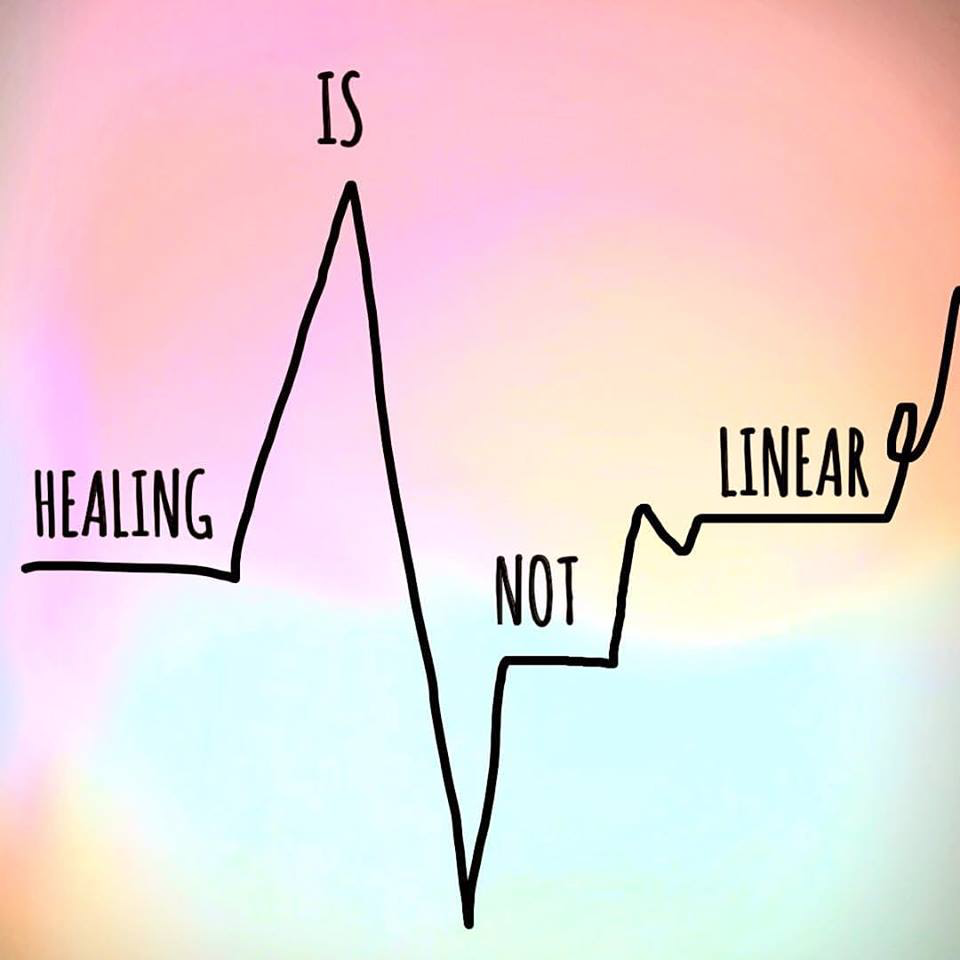Eating disorder treatment and recovery isn’t easy. Many individuals with an eating disorder spend months in treatment ranging from inpatient (IP), residential (RES), partial hospitalization program (PHP), and/or intensive outpatient (IOP). The journey to recovery does not stop after being discharged from a program; often, this is the beginning.
Below are the differences in eating disorder treatment levels of care starting with the highest, more intensive, to lower levels of care:
- Inpatient treatment is for individuals who need continuous monitoring by a physician and nursing staff. These individuals often require medical stabilization by increasing weight and/or decreasing purging behaviors. This is important to note: many individuals may be at their “recommended weight”, however, excessive purging, laxative abuse, dramatic weight loss, etc., can cause a disruption in electrolyte balance resulting in arrhythmias and cardiac arrest. Many people associate malnutrition to underweight individuals, which coultn’t be further from the truth.
- Residential treatment is similar to inpatient; however, clients at this level of care are medically stable and do not require the same medical attention as those in inpatient. Individuals at a residential level of care need extra support in making meal plans and therapy for recovery to be possible.
- Partial Hospitalization Program or PHP. Individuals at this level of care are medically stable and able to complete meals on their own with supervision from staff. PHP clients spend the entire day in treatment and are able to go home at night. This allows clients to be faced with more outside stressors to practice coping skills and return to treatment to discuss challenges and successes.
- Intensive Outpatient or IOP. This level of care includes a minimum of 9 hours per week of treatment. IOP allows clients to return to their activities of daily living such as work, school, and other responsibilities such as preparing and completing meals on their own. Individuals must practice coping skills and completing meals on their own without supervision; however, they are still offered support throughout the week to discuss challenges and successes.
ED treatment and recovery is not linear. It comes in waves, like a roller coaster. Each person experiences ups and downs in treatment, just like everyone experiences this in their own lives. Individuals may start out at a higher level of care, such as residential, and step down accordingly until they are ready to discharge with an outpatient treatment team and continued recovery plan set in place. However, not every client starts at a higher level of care and transition downwards. This is important in understanding the recovery process to support a loved one in his or her journey. Individuals often fluctuate between levels of care, meaning, they may step down or even up to a higher level of care. This is completely normal. There is no shame in needing a higher level of care.
Life after treatment does not mean you are “cured” from an eating disorder. This is to be expected. Regardless of the level of care, the recovery process is filled with its ups and downs meaning, you will have your good and bad days, or weeks, or months, and still be progressing in your journey. Life happens. You cannot experience recovery without the hard times. Just like you can’t experience happiness without allowing yourself to feel sad. Often the low times are experienced when you are faced with the reality of what is truly the driving force behind the unhelpful behaviors. This is helpful in when explaining to families and loved ones when they see their loved one has seemingly “regressed” in treatment or recovery. This is part of it. The worst thing you can do is ignore it. Express your concern and ask for help when you need it. At Eating Disorder Solutions, we understand there will be ups and downs and that is why we’re here.



